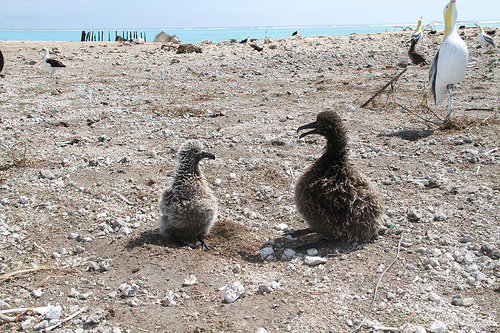Wildlife damage from Japan’s tsunami
 Most people have heard about the damage caused by last week’s massive magnitude 9 earthquake that sent a tsunami—at times reaching 33 feet—onto the island nation of Japan. The situation in Japan is dire. According to CBS News, “An estimated 452,000 people are living in shelters following the earthquake and tsunami. Japan’s police agency currently puts the death toll at 6,900 with 10,700 more people still missing.” Meanwhile, the threat of a nuclear meltdown is looming.
Most people have heard about the damage caused by last week’s massive magnitude 9 earthquake that sent a tsunami—at times reaching 33 feet—onto the island nation of Japan. The situation in Japan is dire. According to CBS News, “An estimated 452,000 people are living in shelters following the earthquake and tsunami. Japan’s police agency currently puts the death toll at 6,900 with 10,700 more people still missing.” Meanwhile, the threat of a nuclear meltdown is looming.
The effects of the tsunami are devastating and far-reaching. From around the world, search teams, medics and volunteers work tirelessly to locate and help victims of the quake and floods. While the world’s attention is rightly focused on aiding the people of Japan, other nearby island countries are trying to recover from severe damage to their infrastructure as well.
One example is the Charles Darwin Foundation (CDF) and Research Station on the Galapagos island of Santa Cruz. As described in a recent Southern Fried Science post, “The tsunami hit the island at high tide on March 11, and the resulting 1.7 meter flood destroyed essential equipment and shut the research station down for the foreseeable future.”
Despite extensive flooding in the Marine Laboratory, the animals at the Research Station were relocated in time to be saved. “Lonesome George, the iconic last Giant Tortoise from Pinta island, had been moved to high ground prior to the tsunami as a precautionary measure,” reported the World Heritage Convention. According to the Galapagos Conservancy, the island’s animal and plant life may have suffered significant damage:
“With regard to the flora and fauna, the impacts are being assessed. According to Galapagos National Park reports, some marine turtle nests at Garrapatero Beach on Santa Cruz were destroyed. We had significant damage to the vegetation along the shore of the Research Station. The marine iguana nests that we have been monitoring within the area…seem fine.”
In Japan, the wildlife casualties are more severe than in the Galapagos. As described in the U.S. Fish and Wildlife website, “A tsunami generated by a powerful earthquake off the coast of Japan struck Midway Atoll National Wildlife Refuge at 11:36 PM on Thursday, March 10th and continued for the next few hours…Fortunately, no one was injured and no major damage occurred to the island’s infrastructure…”
“The short-tailed albatross nest was washed over again, but the [first short-tailed albatross] chick [to hatch on Midway in decades] was found unharmed about 35 [meters] away and returned unharmed to its nest area. A minimum of 1,000 adult/subadult, and tens of thousands of Laysan Albatross chicks, were lost. Thousands of Bonin petrels were buried alive. Spit Island [was] completely washed over. Eastern and Sand Island were 60% and 20% washed over, respectively. Thousands of dead fish were found in the interior of Eastern [Island]. Two live green turtles were rescued from the middle of Eastern [Island]. The impacts on Laysan ducks and monk seals are unknown.”
Amidst the profound human tragedy in Japan and infrastructure damage in other places, there may be one story of hope found in Japan’s wildlife. While the loss is substantial, it is likely that the short-tailed albatross population will recover. As Refuge official Berry Stieglitz said in a Wired Science article, “The loss of all these chicks is horrible. It’s going to represent a significant portion of this year’s Laysan albatross hatch. But in terms of overall population health, the most important animals are the proven, breeding adults. In the long term, the greatest impact would be if we lost more adults. The population should come through this just fine.”
Read more in the Science Insider post “Quake Question #4: What Is the Impact on Wildlife?”
Photo Credit: USFWS Pacific